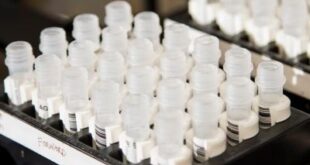Breast cancer is one of the most common cancers affecting women globally. It starts when cells in the breast grow abnormally, often forming a lump or mass. Detecting breast cancer early is crucial for successful treatment, and understanding the body’s signals like hormonal changes plays an important role in early detection. Hormonal fluctuations in women are a natural part of life, occurring during puberty, menstruation, pregnancy, and menopause. However, some of these changes can signal early signs of breast cancer, making it vital to pay attention to them. Recognizing these signs early can be lifesaving.
Breast cancer is when uncontrolled cell growth in the breast leads to the formation of a tumor that can spread to other regions of the body. During this process estrogen and progesterone have been found to be particularly critical. They govern the development and formation of tissues of the breast; however, when this balance is upset, or it is produced in over-large quantities, it leads to irregular cell growth, placing one at greater risk of having breast cancer. The normal range of estrogen in the female body should not be more than 30 to 400 picograms per milliliter (pg/mL) after menstruation starts, and 0 to 30 pg/mL post menopause. However, the levels of progesterone fluctuates throughout the menstrual cycle and even during pregnancy. Progesterone levels of 2 to 25 nanograms/milliliter (ng/ml) in the luteal stage of the menstrual cycle and to 10 to 290 ng/mL in different stages of a pregnancy are considered to be normal. Whereas for testosterone the levels should not exceed 15-70 nanograms per deciliter (ng/dL) or 0.5-2.4 nanomoles per liter (nmol/L). If the levels of these hormones go beyond these ranges, it is important to seek medical attention.
How Can Hormonal Changes Cause Breast Cancer
The female body is evolving continuously, and sex hormones like estrogen, progesterone, and testosterone are the primary sources that drive these changes. It brings out unique transformations in different stages of life. Despite the fact that these changes are normal, there could be a chance that they might increase the risk of having health issues such as breast cancer. Women also experience hormonal changes during various stages of their lives like puberty, pregnancy, and menopause.
Although hormonal alterations are necessary for proper functioning of human body, but when they persist or are in excess amount, they can lead to increased risk of breast cancer in the following ways:
Hormonal Changes During Pregnancy: For instance, during pregnancy, the body needs to secrete very high levels of progesterone and estrogen throughout the gestational period in order to provide the necessary nourishment to the fetus. It is a normal process, but long-term exposure of these hormones in large quantities can prompt the proliferation of breast cells that often turn malignant.
Early Onset of Menstrual Cycle and Late Menopause: Likewise, the female body produces steroid hormones like estrogen during the menstrual cycle and this directly affects the development and function of the breasts. Exposure to estrogen increases if a woman gets her periods early or experience late onset of menopause. This prolonged exposure increases the likelihood of atypical cell formation in the breast, increasing chances of developing breast cancer.
Hormone Replacement Therapy: Furthermore, as women approach menopause and their bodies are unable to produce enough sex hormones, they might have to be put on hormone replacement therapy. This makes them more vulnerable as the treatments usually introduce synthetic hormones into the body that further causes this imbalance of progesterone and estrogen. Therefore, women who are receiving hormonal therapy to address their symptoms of menopause are advised to consult a doctor to measure its advantages and disadvantages.
Hormonal imbalance is inevitable part of life, but by taking necessary precautions women can minimize the chances of breast cancer. Women who take care of their health can learn how hormone changes might have effects on the body. The best method for attaining a natural hormonal balance is through a healthy lifestyle. These are obtained through workouts, proper nutrition and maintaining optimal weight levels. Another important thing is to avoid alcohol and smoking because these are one of the risk factors for breast cancer. Further, a woman should schedule regular mammograms and perform regular self-examinations of her breast because early detection improves the survival rate.
Steps for Prevention of Breast Cancer
The range of options for therapy in breast cancer depends on the stage and when it is discovered. Among those options are radiation therapy, surgery, and hormone therapy. Regular screening is necessary for prevention of breast cancer because it offers more treatment options at diagnosis and better outcomes. While the female body will always be subject to hormonal fluctuations, most risks can be prevented if the woman is informed and uses simple prevention techniques. Understanding how hormones impact the risk in breast cancer puts women in control of their health choices.
In Conclusion
Advancements in medical research has helped us shed light on the complex interplay between female sex hormones and the development of breast cancer. It has also ushered in a new era of advanced treatment options for curing breast cancer using targeted hormone therapies and personalized medication plans. By advancing our understanding of the role hormones play in development of breast cancer we have been able to optimize therapeutic strategies to improve treatment outcomes and increase life expectancy for women whose lives are severely impacted by breast cancer.
Authored by Dr Bhavisha Ghughare, Consultant –Surgical Oncology and Breast Oncoplastic Surgeon, HCG Cancer Center, Borivali, Mumbai
 Newspatrolling.com News cum Content Syndication Portal Online
Newspatrolling.com News cum Content Syndication Portal Online







